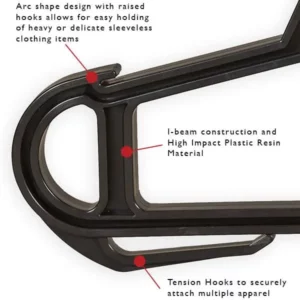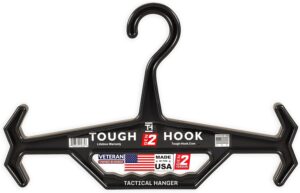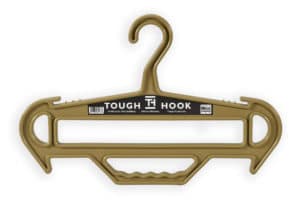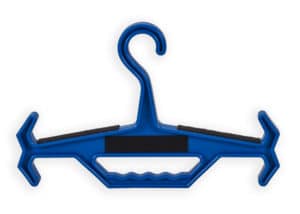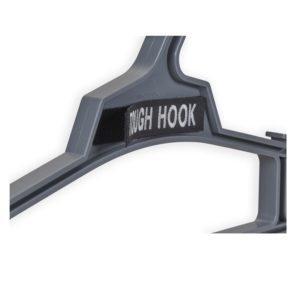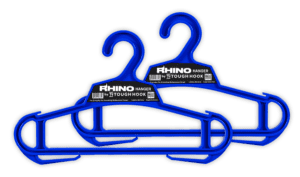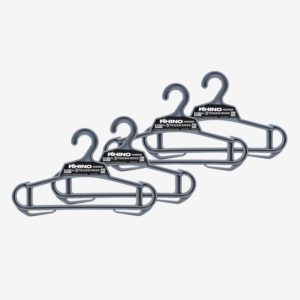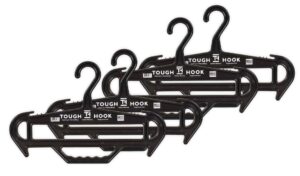Polypropylene is incredibly tough and rigid, and it is considered to be a crystalline thermoplastic that is made from the propene monomer.
Plastic is widely used in a variety of different industries. However, over the passage of time, different kinds of plastic have been introduced depending on their applications. One of the most common plastics used in the world today is polypropylene.
Polypropylene is incredibly tough and rigid, and it is considered to be a crystalline thermoplastic that is made from the propene monomer. It is a member of the polyolefin family of polymers, and is one of the three most widely used polymers in the world as of now. It is used commonly as a plastic and as a fiber in different applications, including a wide range of industries such as the automotive sector, the consumer goods manufacturing industry, and the furniture industry.
Polypropylene is produced through a process known as polymerization. When polymerization occurs of the propene monomer, it results in three chain structures of the plastic, primarily dependent on the positioning of the methyl groups. These include the atactic, isotactic, and syndiotactic chain structures.
Chemical formula (C3H6)n | Density: 0.95 g/cm³ | Melting point: 266°F (130°C) | IUPAC ID: poly(propene)
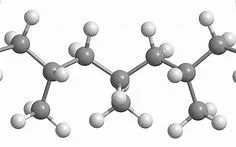
Types of Polypropylene
As you can imagine, there are several types of polypropylene produced for different purposes. The two most commonly produced polymers out there are homopolymers and copolymers. The former is commonly used for general purposes.
It is often made available in a semi-crystallized form and is used in the textile industry, for health care, pipe manufacturing, and in electrical and automotive applications.
On the other hand, copolymers are further categorized into block and random polymers that are made through the polymerization of ethane and propene.
Increase in Demand
If several reports are to be believed, the global demand for polypropylene is currently at 45 million metric tons, and is expected to grow to more than 62 million metric tons. It is perhaps most commonly used in the packaging industry, and the main reason why it’s so popular is because of its slippery surface.
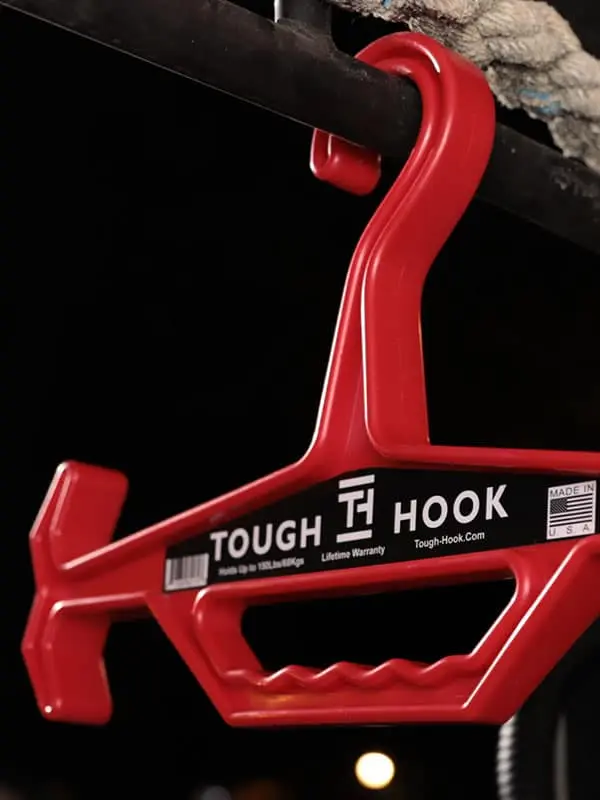
One of the main benefits that polypropylene offers is that it can be easily manufactured into moving hinges through the process of CNC machining or injection molding. These living hinges are generally quite thin and are made of plastics that allow them to bend without ever breaking. In fact, they can bend as far as 360 degrees.
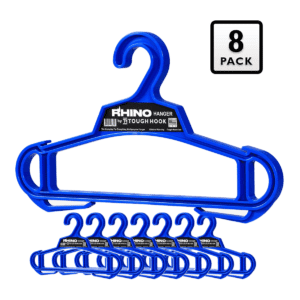
RHINO Clothes Hanger 8 Pack Bundle
Original price was: $111.95.$94.95Current price is: $94.95.RHINO Hanger
$13.95
Original Tough Hook Hanger
$24.95Tough Hanger XL
$17.95
Original ID MAX Tactical Hanger™
$27.95
Original ID Tactical Hanger™
$23.95Rhino ID Hanger (Identification Hanger)
$19.95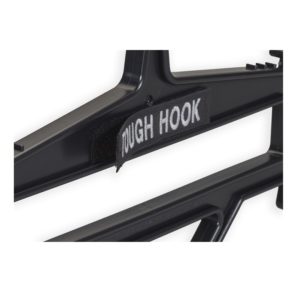
Tough Hanger XL ID Hanger (Identification Hanger)
$20.95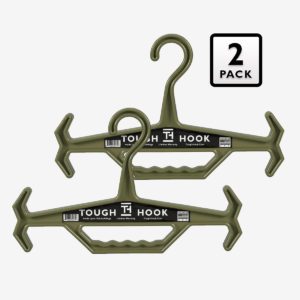
2 Pack Original Tough Hook Hanger Bundle
Original price was: $49.95.$42.95Current price is: $42.95.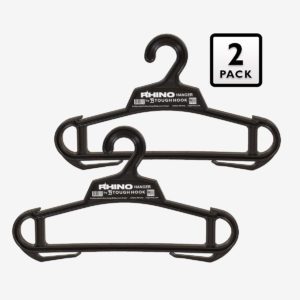
2 Pack RHINO Heavy Duty Clothes Hanger Bundle
Original price was: $27.95.$23.95Current price is: $23.95.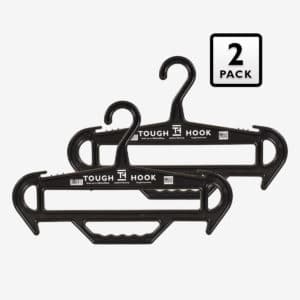
2 Pack Tough Hanger XL Hanger Set
Original price was: $35.95.$29.95Current price is: $29.95.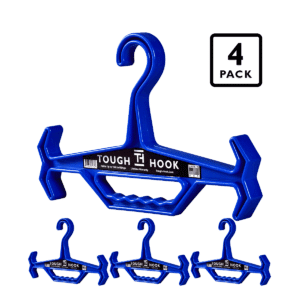
4 Pack Original Tough Hook Hanger Bundle
Original price was: $99.95.$84.95Current price is: $84.95.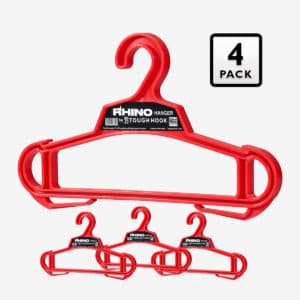
RHINO Hanger 4 Pack
Original price was: $55.95.$47.95Current price is: $47.95.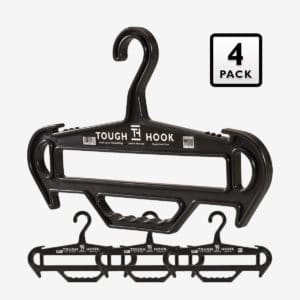
Tough Hanger XL 4 Pack Bundle
Original price was: $71.95.$61.95Current price is: $61.95.As you can imagine, when it comes to structural applications such as adding the hinge on a door, you wouldn’t want to use living hinges. But, for applications that don’t require the hinge to bear any load, such as the hinge on a shampoo bottle or any sauce bottle, polypropylene is a great choice.
If you open the cap on a shampoo bottle, you will be able to move it almost to 360 degrees and even twist it around without ever having to worry about the possibility of it breaking. It does require a considerable amount of effort to break the hinge on its own.
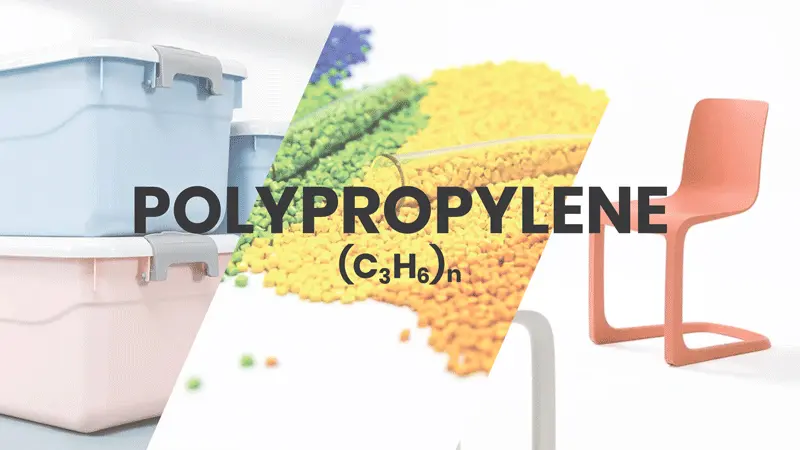
Polypropylene also offers another major benefit and that is that you can easily copolymerize it. Simply put, this means that you can combine it into a composite plastic with several other polymers such as polyethylene. This changes the properties of the material drastically and allows it to be used in a wide variety of engineering applications.
The Main Characteristics
There are several main characteristics and properties of the material that make it so popular for use in different applications.
For starters, it has excellent fatigue resistance. Polypropylene is able to retain its shape even after it has been bent, flexed, and turned around. When making living hinges or hook hangers, this property is especially useful because the material never loses its shape.
This is one of the toughest materials out there. Polypropylene is also quite elastic, but during its early stages, it’s likely to experience deformation over time. Toughness simply refers to the material’s ability to lose its form without breaking.
It’s also important to note that polypropylene is incredibly resistant to chemicals. Different acids and diluted bases do not react to polypropylene, which is why it is an excellent choice for the manufacturing of containers in which such liquids are likely to be stored.
Polypropylene is also incredibly resistant to electricity, which is one of the main reasons why it is widely used for the manufacturing of electronic components. Many of the parts used in modern electronic devices are made from polypropylene because of its increased resistance.
Transmissivity is another major property. While polypropylene is opaque during normal manufacturing processes, you should know that it can be made transparent. For instance, in certain situations where light needs to pass through the material, the material can be made to be transparent.
Most Common Uses
The material is commonly used in the packaging industry. It is used for packaging a variety of different goods such as tobacco, clothing, and different kinds of confectionery and food because of its rigid and flexible nature. The material is also used in the fashion and sports industry.
Tote bags, beach slippers, cinch bags, and many other types of bags and equipment are produced using polypropylene. In fact, the material is also used for making modern jewelry as well. The jewelry pieces are generally quite affordable and are readily available from different stores.
The material has become popular for its use in the consumer products sector, with plenty of furniture pieces, houseware, and toys being produced. For instance, many hangers are made from polypropylene.
Hangers are used in almost every home out there, and they are commonly available in different shapes and sizes. If you are interested in buying hangers, you will want to make sure that you only buy robust and durable ones. Tough hook hangers are made of polypropylene and they feature I-beam construction, so you should know that they are virtually indestructible and can bear a considerable amount of weight.
If you are looking to buy tough hook hangers, you simply can’t go wrong with these hangers. They are some of the most durable pieces of equipment out there and are going to last you a lifetime!
What are the benefits of Polypropylene?
Polypropylene, often called the ‘steel’ of plastics, has impressive advantages. Firstly, it’s incredibly durable and resistant to fatigue, making products made from it long-lasting. Polypropylene is also immune to water, oils, and most chemicals, increasing its versatility. Being lightweight, it reduces transport and handling costs.
Furthermore, Polypropylene’s eco-friendly nature cannot be understated; it’s fully recyclable, mitigating its environmental impact. Notably, it is cost-effective, providing high value for an affordable price, making it a preferred material in various industries.
What are the uses of Polypropylene?
Polypropylene’s resilience and versatility lend it to a wide spectrum of applications. In the packaging industry, it’s used for making food containers, bottle caps, and plastic films due to its ability to protect against moisture, chemicals, and UV light.
Polypropylene’s heat resistance makes it ideal for microwave-safe containers and kitchen appliances. Its usage extends to the automotive sector for car bumpers and interior components. In the textile industry, it’s used for indoor-outdoor carpets; in the medical field, it’s used for lab equipment and surgical sutures. Of course, its sturdiness makes it perfect for making durable items like polypropylene hangers.
What is a tough hook hanger, and why is it made of Polypropylene?
A tough hook hanger is a robust, durable hanger for heavy items. Made of Polypropylene, these hangers offer superior strength and longevity compared to standard plastic or wire hangers. Polypropylene is chosen for its exceptional resistance to physical and chemical stress, ability to maintain its shape under heavy loads, and cost-effectiveness.
Polypropylene material ensures that tough hook hangers can withstand the weight of heavy coats, suits, or outdoor gear without breaking or deforming, making them a reliable choice for maintaining the shape and quality of your clothing.



